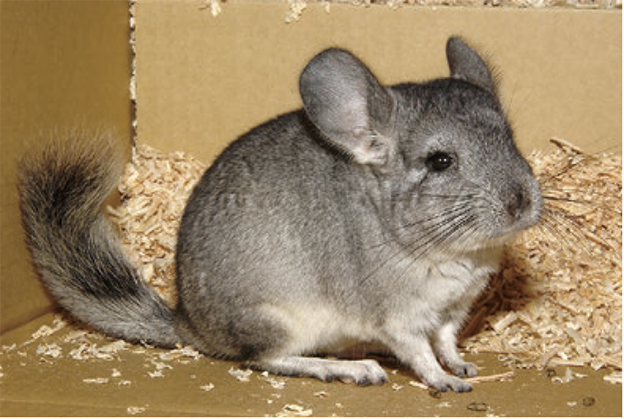Care Points: How to Prevent Fur Balls
Fur balls can be a source of stress for chinchillas. When fur balls form, it can hinder airflow, leading to more fur balls, a damp body, and a higher risk of skin diseases. Shed hair that comes out from the root can tangle with other fur, forming a fur ball. When a fur ball develops, it can cause the skin to be pulled, creating an unfavorable condition for the chinchilla. This may lead to the chinchilla becoming less willing to be touched, feeling irritable, or even pulling out its own fur.
Lifestyle Habits to Prevent Fur Balls
To prevent fur balls, it’s essential to maintain a stable temperature and humidity. Unstable room temperatures and rising humidity are the primary causes of fur balls. The ideal room temperature depends on the chinchilla’s fur quality and quantity. If you notice an increase in fur balls, it may be time to reassess the temperature and humidity levels.
Additionally, if the chinchilla is not bathing properly in sand, fur balls are more likely to form. If dirt, shed fur, or excess oil is not adequately removed, the fur can tangle easily. Consider improving the sand bathing environment by using finer sand, changing the sand daily, or choosing a container that facilitates sand bathing. During heavy shedding periods, it’s effective to stroke the fur in the opposite direction, from the rear to the head, to help lift loose fur before bathing.
Grooming at Home
Once you bring your chinchilla home, mastering daily care is crucial. Start by holding the chinchilla and sitting on a chair or the floor. Before beginning fur ball care, lightly spray a grooming product onto the fur. Then, gently stroke the chinchilla’s body with your hand while using your fingers to collect loose fur.
If you find a fur ball during this process, try to gently pull it out while holding the base of the fur. If it’s difficult to remove fur balls by hand, you can use a slicker brush to untangle them. If a large fur ball has formed or if the fur has matted, it may be necessary to safely cut the fur ball with scissors. However, this can be a delicate task, so it’s best done with two people or by a professional at a veterinary clinic.
Once you’ve removed a significant portion of the fur balls, use a brush designed to collect loose fur for gentle brushing. Many chinchillas dislike having their rear brushed, so start from the back and brush gently, especially around the rear. Finally, if the chinchilla is comfortable, you can use a comb to tidy up its fur.
Preventive Measures
Regular temperature control and care are vital, but depending on the fur quality and quantity, some chinchillas may still develop fur balls despite regular brushing. Additionally, frequent human contact can make a chinchilla’s fur moist and oily, increasing the likelihood of fur ball formation. Regular sand baths help chinchillas shed fur as their instincts dictate. The best way to address shedding periods is to maintain a consistent temperature and humidity year-round. This will help stabilize the chinchilla’s body temperature and reduce stress.



Comments